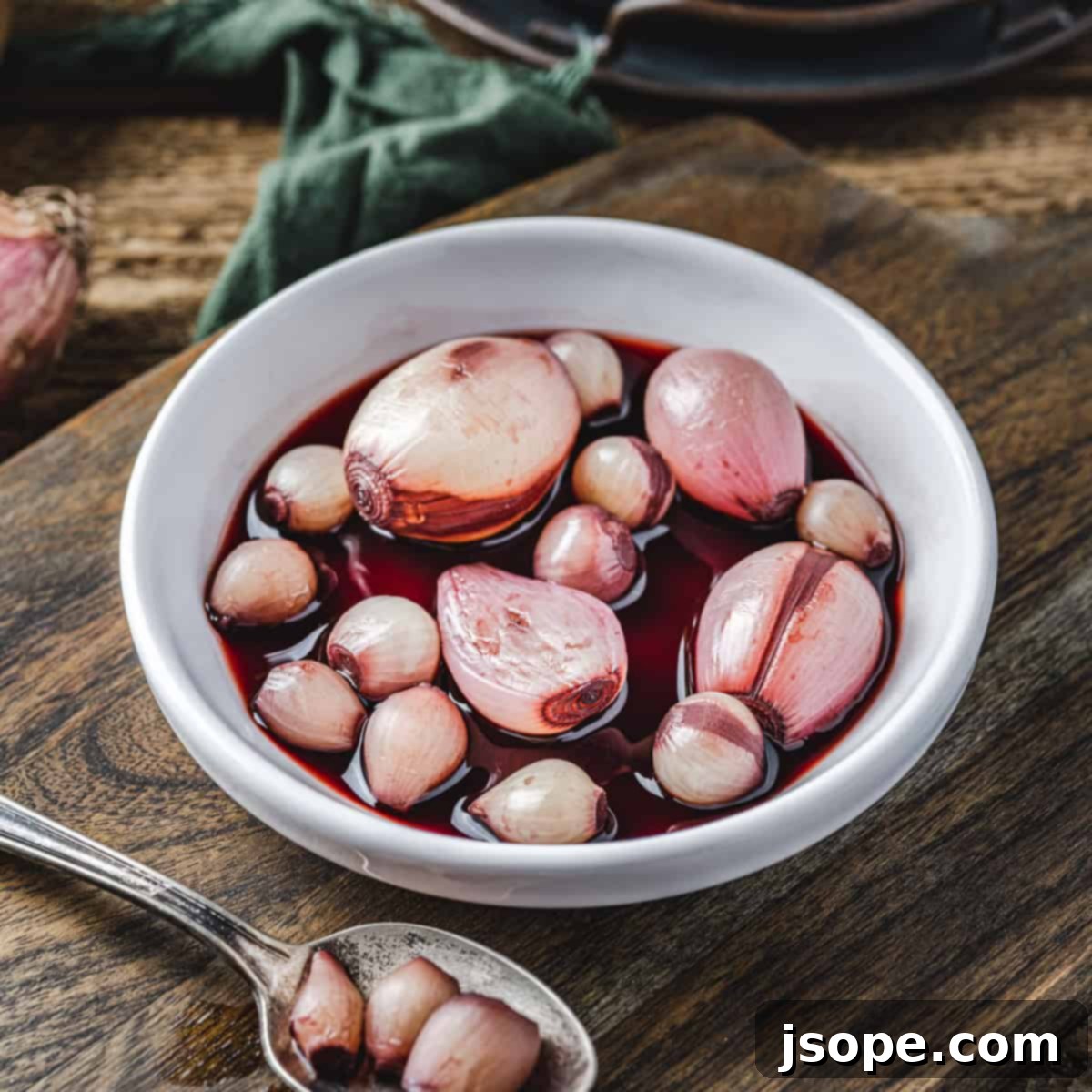Embark on a culinary journey into the gentle art of poaching, a time-honored cooking technique that unlocks unparalleled flavors and textures in a wide array of ingredients. Today, we’re diving deep into our favorite poaching experiences at home, crowned by an exquisite recipe that promises to elevate your meals: Wine-Poached Shallots and Onions. These tender, flavorful morsels are not just a side dish; they are a sophisticated addition, infusing depth and character into any plate they grace. Discover how this subtle method can transform simple ingredients into something truly special, making them a staple in your kitchen for that unique touch.
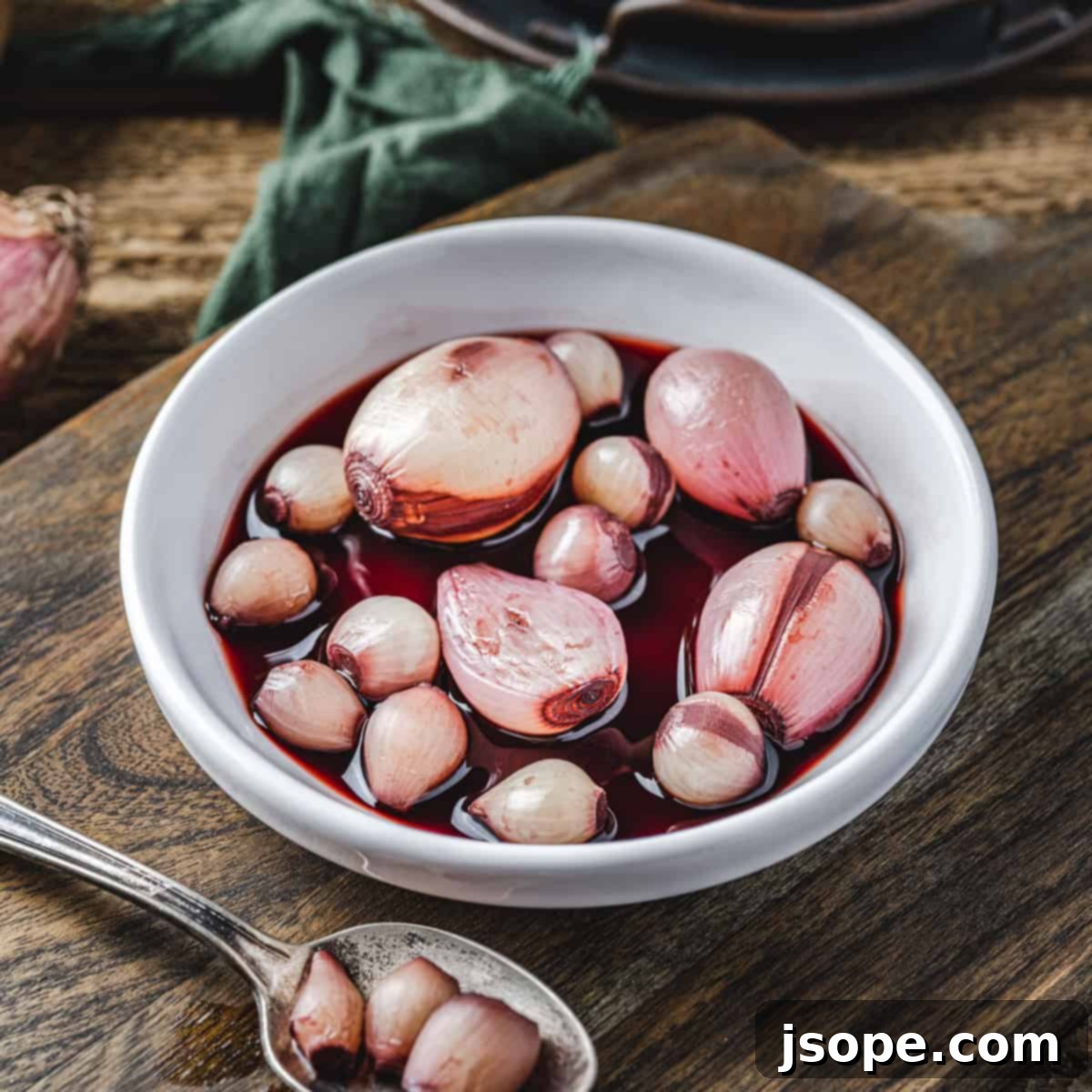
The Versatility of Poaching: A Gentle Cooking Method
Poaching stands as one of humanity’s most ancient cooking techniques, a testament to its enduring effectiveness and subtle charm. Often overlooked in favor of more aggressive cooking methods, poaching offers a delicate approach that preserves the integrity, moisture, and nuanced flavors of food. While many immediately associate poaching with the quintessential perfectly cooked egg, or perhaps a flaky piece of fish, its application extends far beyond these familiar staples. This gentle method is incredibly versatile, suitable for an astonishing array of ingredients, from tender proteins to vibrant vegetables and delicate fruits.
Consider the breadth of foods that can benefit from poaching: delicate white fish like halibut, salmon, or cod emerge incredibly moist and tender. Chicken breasts, often prone to drying out, become succulent and flavorful when poached. Even tougher cuts of beef or veal can be transformed into meltingly tender dishes with the right poaching liquid and technique. Beyond proteins, imagine artichokes retaining their vibrant color and delicate texture, or pears softening into a delightful dessert, infused with aromatic spices. We often embrace this technique in our kitchen, with favorites like Poached Halibut with Tarragon Cream Sauce and our go-to Perfectly Poached Eggs, which are absolutely divine when served atop Cajun Crab Cake Benedicts. Each dish showcases how poaching is not just about cooking, but about enhancing the natural essence of the ingredients.
Understanding Poaching: A Culinary Definition
At its core, poaching is defined by the complete submersion of a food item in a cooking liquid, maintained at a relatively low and consistent temperature. This seemingly simple definition, however, opens up a world of culinary possibilities. The ambiguity of “food item” and “cooking liquid” is precisely where the magic of poaching lies, inviting creativity and experimentation in the kitchen. Unlike boiling, which violently agitates food and can strip it of flavor and nutrients, poaching cooks food gently, preserving its delicate structure and infusing it with the essence of the surrounding liquid.
This technique, while sometimes underappreciated or misapplied, holds immense potential for creating dishes that are both healthy and incredibly flavorful. The objective is not to aggressively cook the food, but rather to coax it to tenderness and doneness through a slow, even transfer of heat. This gentle process ensures that even the most delicate ingredients maintain their shape, moisture, and intrinsic flavors, often resulting in a superior culinary experience. By understanding and mastering the nuances of poaching, home cooks can unlock a new level of sophistication and enjoyment in their daily cooking.
The Critical Role of Poaching Liquid Temperature
The success of poaching hinges significantly on maintaining the correct liquid temperature. For optimal results, the poaching liquid should consistently range between 140°F and 180°F (60°C and 82°C). This specific range is crucial because it’s hot enough to cook food thoroughly without causing the rapid bubbling and agitation associated with simmering or boiling. To put this into perspective, boiling water reaches approximately 212°F (100°C), a temperature that can break down delicate proteins and textures, leading to tough or rubbery results. The lower temperature of poaching ensures a gentle heat transfer, allowing food to cook evenly from the outside in, retaining its moisture and tender structure.
Consider the example of chicken: it needs to reach an internal temperature of 165°F (74°C) to be safely cooked. When poaching chicken, the liquid itself should be held at or just above this internal target temperature, allowing the chicken to cook slowly without drying out. This precision in temperature control is what differentiates poaching from other moist-heat methods. If the liquid is too hot, the food can seize up or become tough; if it’s too cold, it simply won’t cook effectively. Using a kitchen thermometer is highly recommended to monitor and maintain the ideal poaching temperature, ensuring consistent and perfect results every time. Visual cues, such as very small bubbles gently rising from the bottom of the pot but no vigorous bubbling, can also indicate the correct temperature range.
Unlocking Flavor: The Art of Choosing Poaching Liquids
One of the most exciting aspects of poaching is the creative freedom it offers in selecting the cooking liquid. Far from merely being a medium for heat transfer, the poaching liquid is a fundamental component in flavoring the food. This is where poaching truly transcends basic cooking and enters the realm of culinary artistry. While plain water certainly works, it only scratches the surface of what’s possible.
Imagine the possibilities: poaching eggs not just in water, but in white wine, a vibrant red wine, or even sparkling Prosecco. From our “Cooking with Wine” perspective, these aren’t just novel ideas but time-honored techniques that deserve a resurgence in modern kitchens. The subtle infusion of wine flavors transforms a simple egg into a gourmet experience. This concept applies universally to all foods suitable for poaching. You can aggressively season your poaching liquid with a variety of ingredients to impart profound flavors. Think rich chicken or vegetable broths, fragrant court bouillon, aromatic coconut milk for a Thai-inspired dish, or even milk for poaching fish or chicken, creating a tender and creamy result.
Even when opting for water, we rarely leave it unseasoned. Adding fresh herbs like thyme, rosemary, or bay leaves, along with whole peppercorns, garlic cloves, lemon slices, or a splash of vinegar, can elevate the most basic poaching liquid into a flavor powerhouse. The goal is to create a harmonious blend where the liquid enhances the natural taste of the food without overpowering it, resulting in a dish that is both tender and deeply flavorful. This approach allows for endless experimentation and customization, making each poached dish a unique creation.
Wine-Poached Shallots and Onions: A Recipe for Culinary Elegance
Today, we’re putting these principles into practice with a recipe that beautifully marries simplicity with sophistication: Wine-Poached Shallots and Onions. This dish utilizes the gentle embrace of red wine to transform ordinary pearl onions and delicate shallots into tender, subtly sweet, and tangy gems. We chose to poach both pearl onions and shallots together, embracing their distinct yet complementary flavor profiles that add layers of complexity to the final product.
When you glance at the recipe, you might initially flinch at the sight of two-thirds of a bottle of fine red wine destined for a saucepan. However, fear not! This rich, flavorful poaching liquid is a culinary treasure in itself. Once the onions and shallots have absorbed their exquisite wine bath, the leftover liquid can be saved, seasoned further, and repurposed for countless other culinary adventures. Imagine whisking it into a savory vinaigrette, reducing it into a sophisticated sauce for roasted meats, or even using it to poach eggs the very next morning for an extraordinary breakfast. Saving this liquid not only maximizes flavor but also prevents waste, offering an incredible base for expanding your repertoire. And for those who enjoy a glass while they cook, there’s still a third of the bottle left to savor alongside the aromas of your developing masterpiece – a delightful bonus!
These versatile Wine-Poached Shallots and Onions can elevate a multitude of dishes. One of our personal favorite pairings is with our Grapefruit Herb Chicken with Supreme Sauce, where their sweet and acidic notes cut through the richness beautifully. However, the possibilities are truly endless: serve them alongside a perfectly seared steak, fold them into an omelet, scatter them over a fresh salad, or incorporate them into a gourmet sandwich. Their vibrant color and complex flavor make them an indispensable garnish or component for any dish needing a touch of elegance.
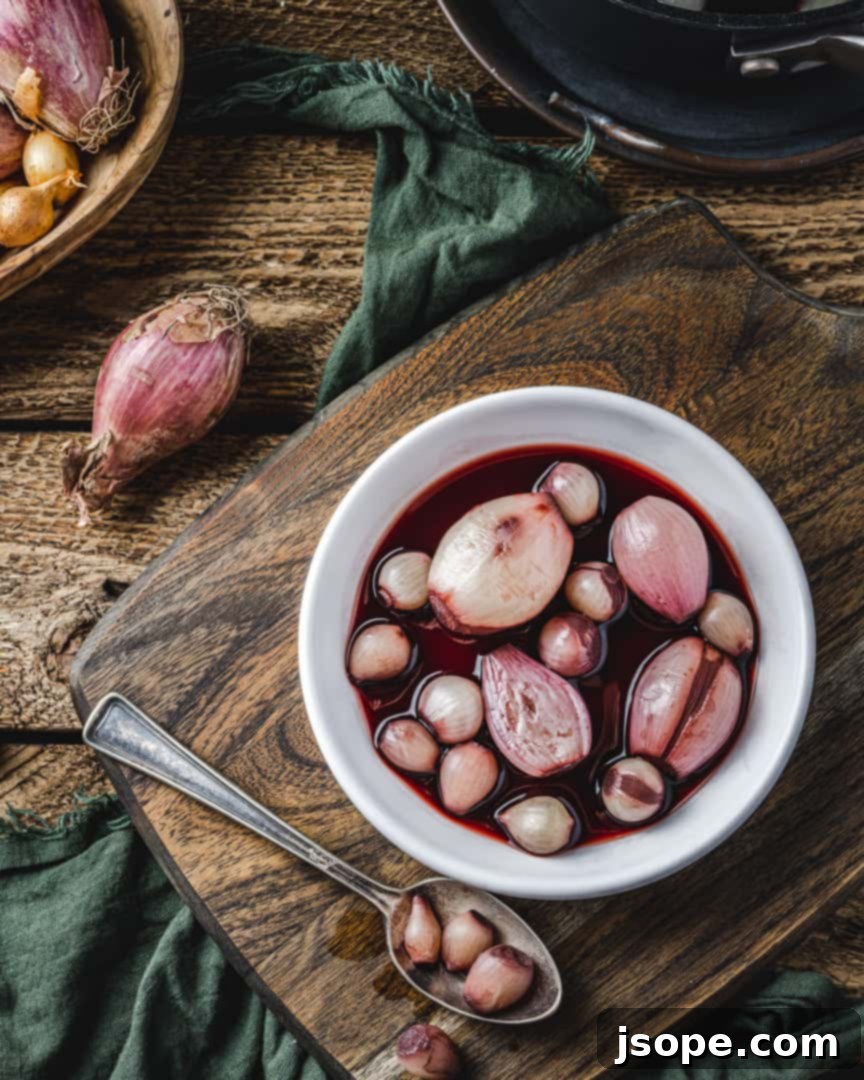
The Secret to Seductive Shallots and Onions: Poaching in Wine
There’s an undeniable allure to wine-poached onions and shallots; they offer a visually stunning and incredibly delicious enhancement to a diverse range of dishes. Achieving this captivating result is surprisingly simple, yet it demands one crucial ingredient: patience. While the temptation to rush the process by boiling the wine vigorously might arise, succumbing to it will lead to disappointing results. Rapid boiling will cause the exterior of your shallots and onions to become mushy and overcooked, while the interior remains unpleasantly crunchy. Moreover, their delicate structure will likely disintegrate, losing their elegant form.
The true magic of wine poaching lies in the slow, gentle infusion of flavor and gradual tenderization. This unhurried method ensures that the onions and shallots cook evenly throughout, retaining a pleasant bite without becoming mealy, and maintaining their beautiful, intact shape. The most challenging part of this recipe often isn’t the cooking itself, but the initial preparation: peeling the myriad pearl onions and shallots. While peeling pearl onions with a paring knife can be tedious, there’s a simple trick to make it easier. Place them in a bowl of very hot (just below boiling) water and let them soak for a few minutes. This process loosens their skins, allowing for much smoother peeling with a paring knife. Shallots, being slightly larger, are generally easier to peel with a paring knife directly.
For both, a crucial step for maintaining their structural integrity during poaching is to trim the root end minimally. A tiny slice, just enough to remove the very tip, ensures that the layers of the shallot or onion remain cohesive throughout the gentle cooking process, preventing them from falling apart in the wine bath.
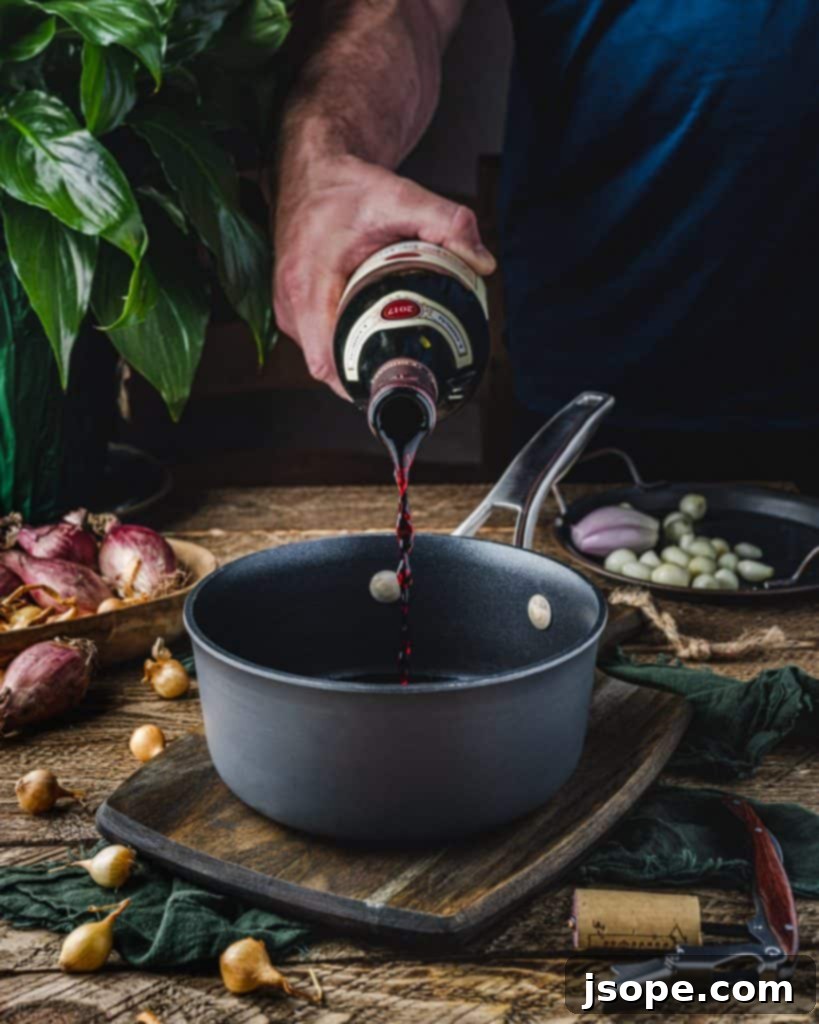
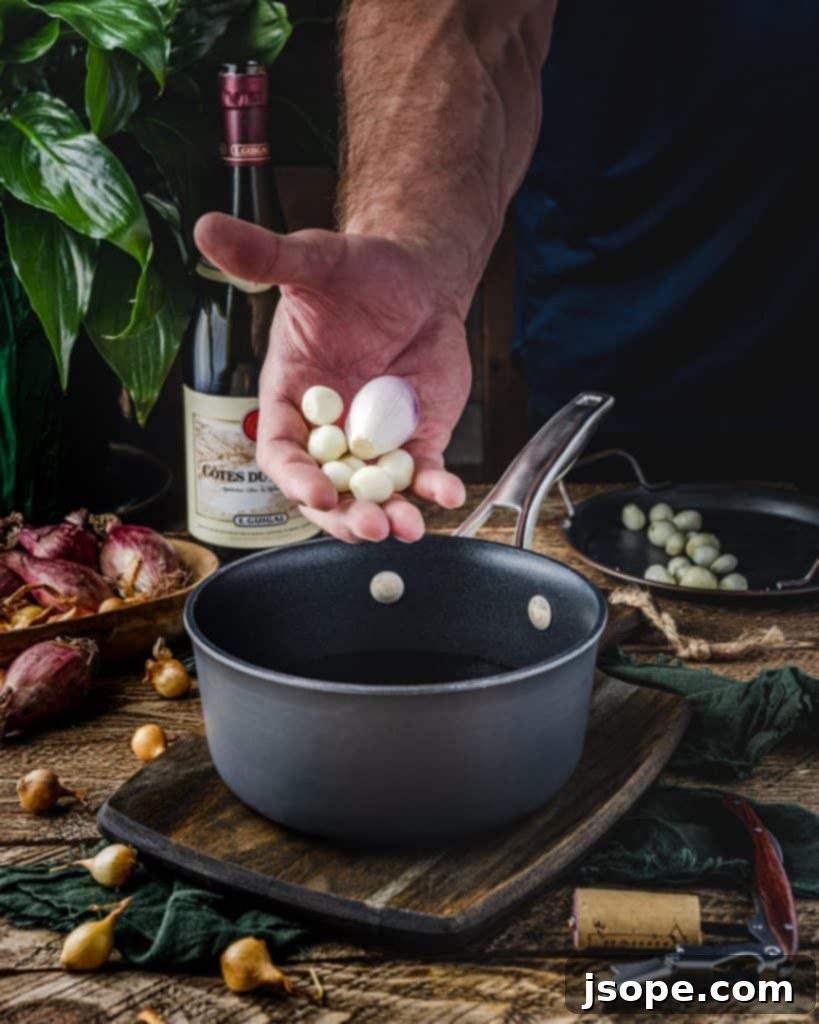
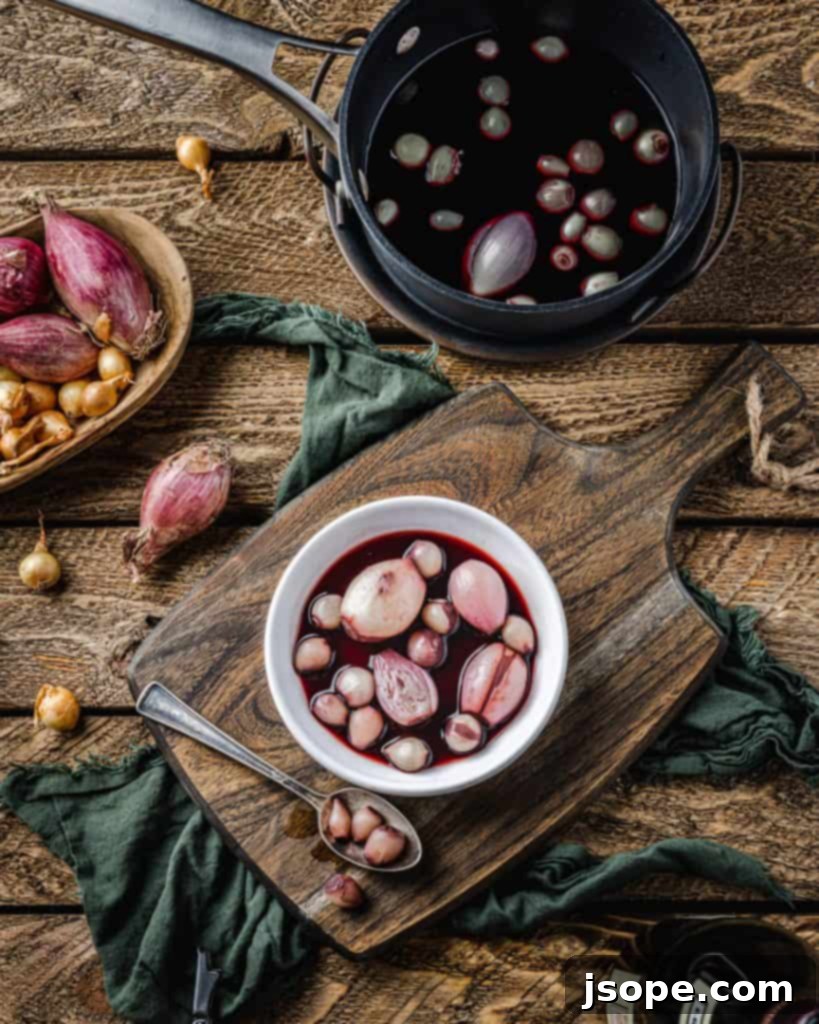
Selecting the Perfect Size and Flavor Enhancements
When preparing Wine-Poached Shallots and Onions, the size of your chosen alliums can influence both cooking time and final presentation. We particularly favor the delicate dimensions of pearl onions for their aesthetic appeal and consistent tenderness. Boiler onions, which are slightly larger, also perform exceptionally well, offering a more substantial bite. Shallots can be a bit more challenging to find in uniform sizes, but both small and large varieties are perfectly suitable. If using smaller, bite-sized shallots, they can be served whole or halved for a charming presentation. For larger shallots, consider slicing them into elegant ⅓-inch (or just under a centimeter) thick rounds after poaching. This not only ensures a pleasing visual but also makes them easier to incorporate into various dishes.
While a good quality wine will wonderfully enhance the natural sweetness and subtle tang of the onions and shallots on its own, this recipe also offers a fantastic canvas for flavor experimentation. Don’t hesitate to introduce additional aromatics into your poaching liquid. A few bay leaves can add a subtle herbal note, while a handful of black peppercorns will introduce a gentle warmth. For a more complex flavor profile, consider a star anise pod for a hint of licorice, a sprig of fresh thyme, or a strip of orange zest to brighten the overall taste. A tiny pinch of sugar can help balance the acidity of the wine, further rounding out the flavors. The beauty is in customizing the infusion to your preference. The end result, regardless of subtle additions, should be wonderfully tender, sweet, and exquisitely tangy shallots or onions, ready to complement and elevate whatever culinary creation you envision.
Essential Poaching Equipment: Simplicity in the Kitchen
One of the many delights of poaching is that it requires no specialized equipment. Chances are, everything you need is already within arm’s reach in your kitchen cabinets. The primary goal of poaching is to gently submerge your food in a controlled liquid environment, making a simple saucepan your most valuable tool. For this particular recipe of Wine-Poached Shallots and Onions, a 1.5-quart to 3-quart saucepan with straight sides is ideal, depending on the quantity you plan to prepare. The 1.5-quart size is often perfect for a standard batch, ensuring the onions and shallots are comfortably submerged without excessive liquid.
Even heating is paramount for successful poaching. A good quality saucepan, typically made from materials like stainless steel or enameled cast iron, will distribute heat evenly and maintain a consistent temperature, preventing hot spots that could prematurely cook or damage delicate ingredients. While a lid might be useful for maintaining heat in some cooking applications, it’s often best to poach uncovered or with a slightly ajar lid, allowing you to easily monitor the temperature and the cooking progress of your food. A reliable kitchen thermometer (instant-read or candy thermometer) is also an invaluable asset for precisely monitoring the liquid’s temperature, ensuring it stays within the optimal 140°F to 180°F range. This minimal setup proves that sophisticated cooking doesn’t require complex gadgets, just the right technique and basic, reliable kitchen tools.
Enjoy Your Culinary Creations!
We sincerely hope you’ve been inspired to try this delightful recipe for Wine-Poached Shallots and Onions, and that our comprehensive tips for mastering the gentle art of poaching prove helpful in your culinary endeavors. Poaching is a skill that, once embraced, opens up a world of tender, flavorful possibilities in your kitchen. If you give this recipe a try, we’d absolutely love to hear about your experience! Please leave us a comment below to share your thoughts, or tag us on Instagram @cooking_with_wine so we can see your beautiful creations.
For those who enjoyed this recipe and are keen to explore more wine-infused and flavorful dishes, be sure to check out some of our other popular recipes. Each one is crafted to bring a touch of elegance and deliciousness to your table:
- Grapefruit Herb Chicken with Supreme Sauce
- Crunchy Chicken with White Wine Lemon Butter Sauce
- Peppercorn Crusted Steak with Brandy Cream Sauce
- Coq au Vin – Chicken in Red Wine
- Delicious Red Snapper Amandine
📖 Recipe: Wine-Poached Shallots and Onions
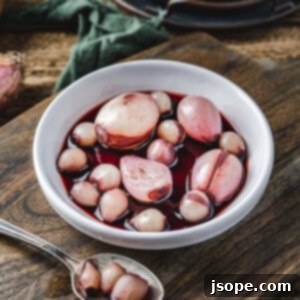
Wine-Poached Shallots and Onions
Wine-Poached Shallots and Onions make a delicious addition to a variety of dishes! Check out the recipe along with our tips for poaching food.
Pin Recipe
Ingredients
- 30 pearl onions
- 6 medium shallots (about the size (not shape) of a golf ball)
- 2 cups dry red wine (500 ml)
- Pinch of fine finishing salt of your choice
Instructions
- Peel your shallots and pearl onions. For the pearl onions, it is easiest to place them in a bowl of hot water and let them soak for a few minutes first. Then you can peel them a bit easier with a paring knife. Shallots can be peeled just fine with a paring knife. The root end should be cut off but just a little, which will ensure that the shallot/onion stays together as it poaches.
- Heat your wine in a straight-sided saucepan and then turn it down as far as you can. Remember, we aren’t simmering, as that is over 200°F (93°C) and the goal is about 160°F (°71C). Put your onions and shallots in the wine; you don’t have to wait until the wine is fully heated. Let the onions and shallots poach, uncovered, for at least 40 minutes. Check the smallest ones for tenderness with a toothpick. You want a bit of texture (not mushy) but very tender. This can also be personal preference – they can be “done” earlier or later depending on your taste. If you’ve never done this, try one and go from there. It’s impossible to give a straight cooking time, but there is quite a bit of flexibility here. If your onions are small, and you like a decent amount of crunch, start testing at 25 minutes.
- Remove from the liquid, reserving the liquid for future use, and let cool. If the size dictates, slice with a sharp knife and serve as a garnish.
Nutrition
Carbohydrates: 20g
Protein: 2g
Fat: 0.2g
Saturated Fat: 0.1g
Polyunsaturated Fat: 0.03g
Monounsaturated Fat: 0.02g
Sodium: 9mg
Potassium: 303mg
Fiber: 3g
Sugar: 8g
Vitamin A: 4IU
Vitamin C: 13mg
Calcium: 44mg
Iron: 1mg
Tried this recipe?
Let us know how it was!
